Art World
Designer Mathieu Lehanneur on How His Paris Olympics Cauldron Stays Lit
The levitating cauldron is such a popular attraction that it may be permanently installed in Paris.
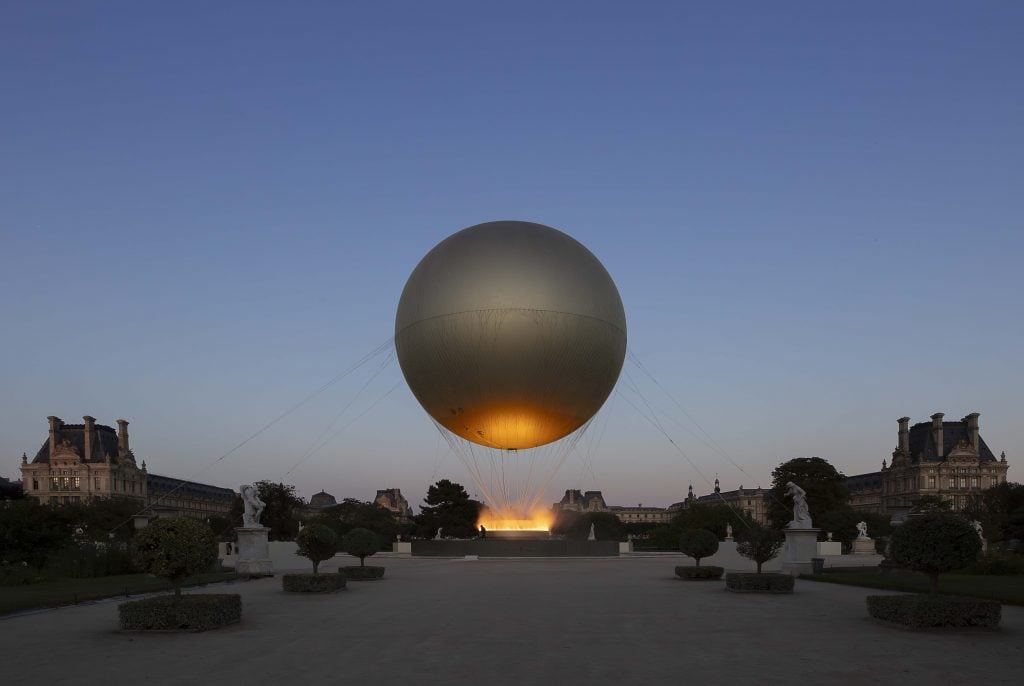
Could the luminous Olympic cauldron, a nod to French aviation history from French designer Mathieu Lehanneur, become a permanent fixture in the city of Paris?
The city’s mayor is hoping to make it happen, and Lehanneur is open to the idea—as long as the work retains its strong emotional resonance with viewers.
“It’s totally in discussion,” he told me. “But in a way, it’s like a Christmas tree, and nobody keep the Christmas tree all year long.”
Each night, the cauldron takes flight, a golden orb rising 200 feet above the city in dazzling fashion. During the day, visiting the cauldron at the Tuileries Garden, just past the Arc de Triomphe, is free. But the 10,000 daily tickets to see it sold out immediately, and Lehanneur has been amazed by the way the city has embraced the work.
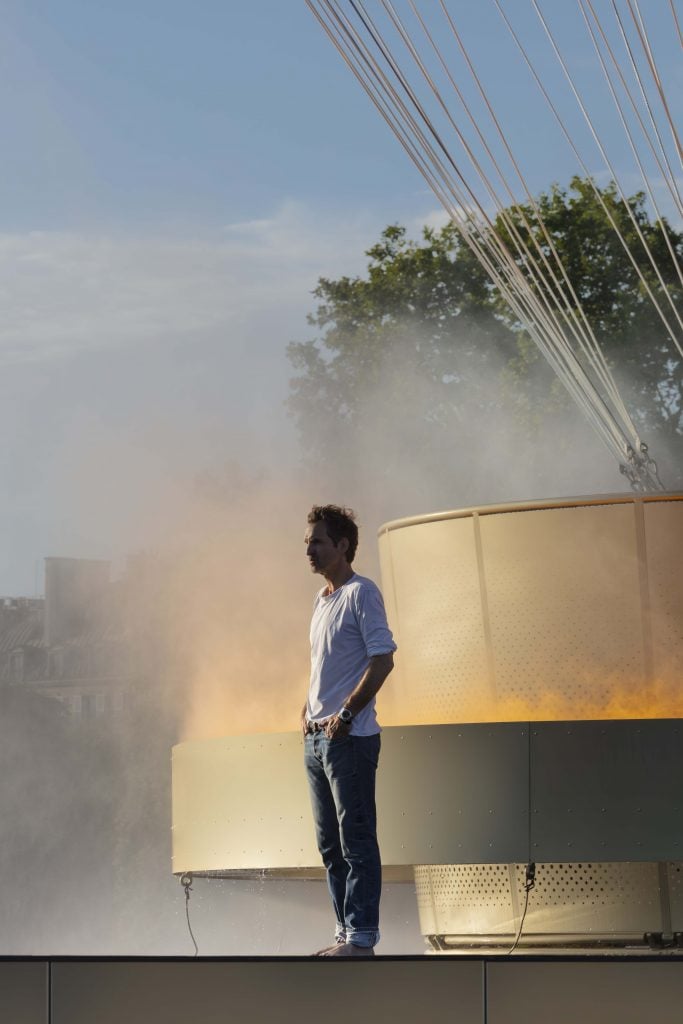
Mathieu Lehanneur with his Paris 2024 Olympic Cauldron. Photo ©Felipe Ribon for raf-studio.
“People were telling me that actually it’s our cauldron, and we want to keep it forever,” he said. ”As you may know, French people, we are never happy with anything. We are never proud of anything.… My dream was to make people cry, but frankly, it was impossible for me to expect.”
The Paris games approached Lehanneur about the project in December 2022, inviting him, along with about 10 other designers, to submit a proposal. The task was to design this year’s Olympic torch, a small cauldron to be lit at each city along the relay, and the main cauldron that would keep the flame burning throughout the games.
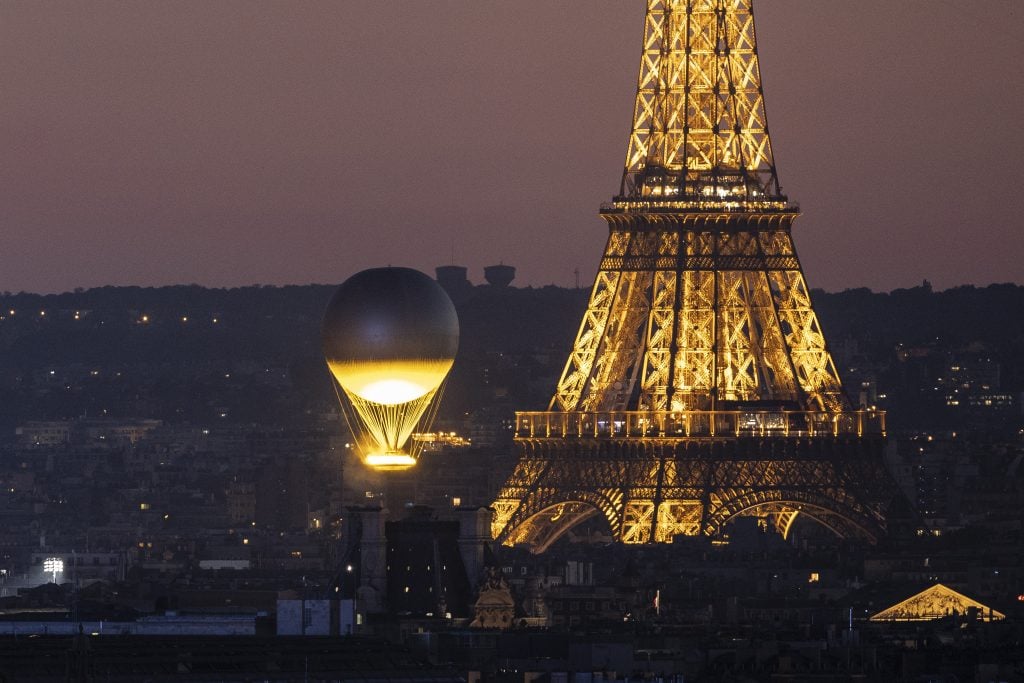
Mathieu Lehanneur’s Olympic Cauldron floating in the skies of Paris next to the Eiffel Tower on day fifteen of the 2024 Olympic Games. Photo by Maja Hitij/Getty Images.
Lehanneur, who also transformed the Musée d’Orsay’s clock room into an Airbnb for the Olympics, approached the design as a story in three chapters. He was inspired by the French national motto, “Liberté, égalité, fraternité,” or “liberty, equality, fraternity.”
The sleek steel torch represented equality, with a perfectly symmetrical design. The relay cauldron stood for fraternity, with a ring of fire for a circle of friendship. And for freedom, Lehanneur wanted the cauldron to literally take flight, as free as a bird and lighting up the city.
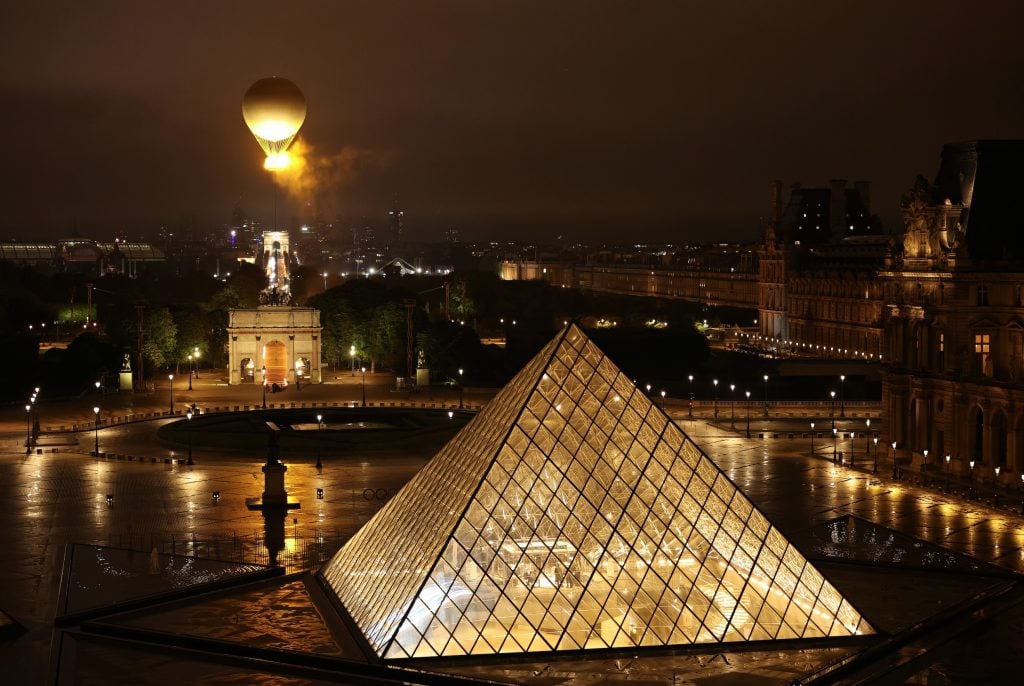
Mathieu Lehanneur’s 2024 Olympic Cauldron floating in the skies of Paris above the Louvre Pyramid and the Arc de Triomphe du Carrousel. Photo by Richard Heathcote/Getty Images.
That’s how he came up with the aviation-themed concept for the work. In 1783, France became the first nation to take to the skies, when the Montgolfier brothers flew the first piloted hot air ballon. Just a few days later, the Robert brothers and Jacques Alexandre César Charles did the same with a hydrogen balloon.
“Before 1783, no human being has ever been able to fly. It’s a key moment for French people, but it’s a key moment for science history,” Lehanneur said.
His initial proposal did not include a location for the cauldron. Then, the Louvre came forward to offer the Tuileries Garden—serendipitously, the site of that historic hydrogen balloon flight. It was perfect.
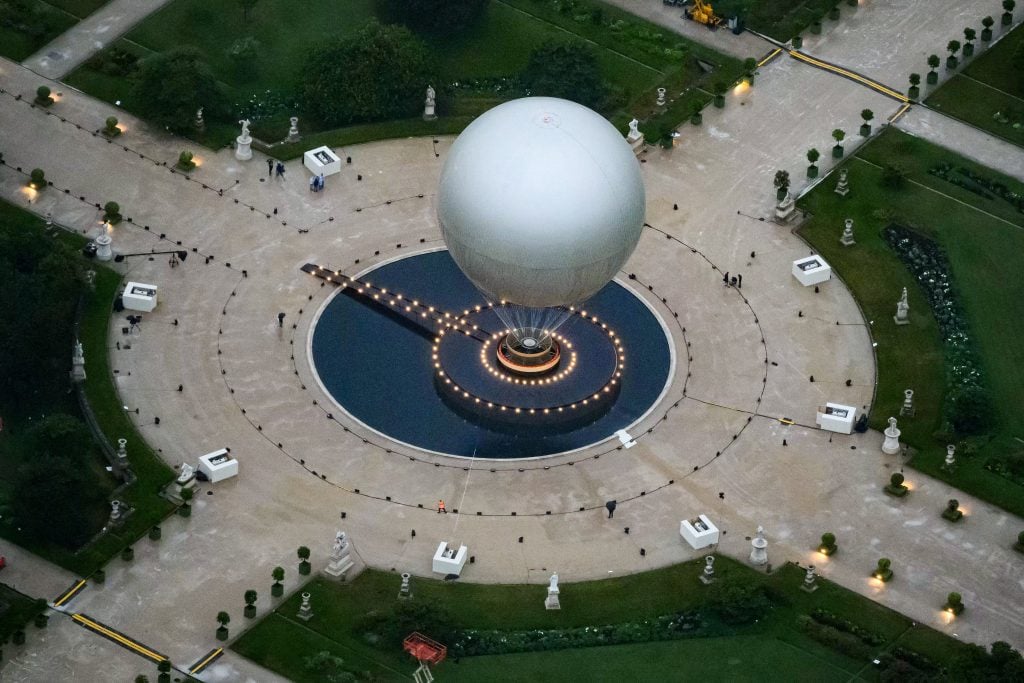
A photograph taken from a helicopter shows an aerial view of Mathieu Lehanneur’s Olympic cauldron in the Tuileries garden in Paris. Photo by Lionel Bonaventure-Pool/Getty Images)
The cauldron can be one of the most lasting images of an Olympic games. And there is precedent for one remaining in place after the competition draws to a close.
Michael Scott-Mitchell’s design for the 2000 Olympics dramatically rose up from the water as Aboriginal Australian sprinter Cathy Freeman ignited the flame. It was later revamped to become a fountain in a park named in Freeman’s honor.
More recently, the 2016 and 2020 games both had two cauldrons—one in the main stadium, and another flame out in the public on the waterfront. In 2022, Tokyo reinstalled the secondary cauldron on the Ariake West Canal, where the sculpture, designed by Oki Sato, had also burned during the competition. The smaller of Anthony Howe‘s kinetic sculptures for the Rio games was permanently installed in front of the city’s Candelária church.
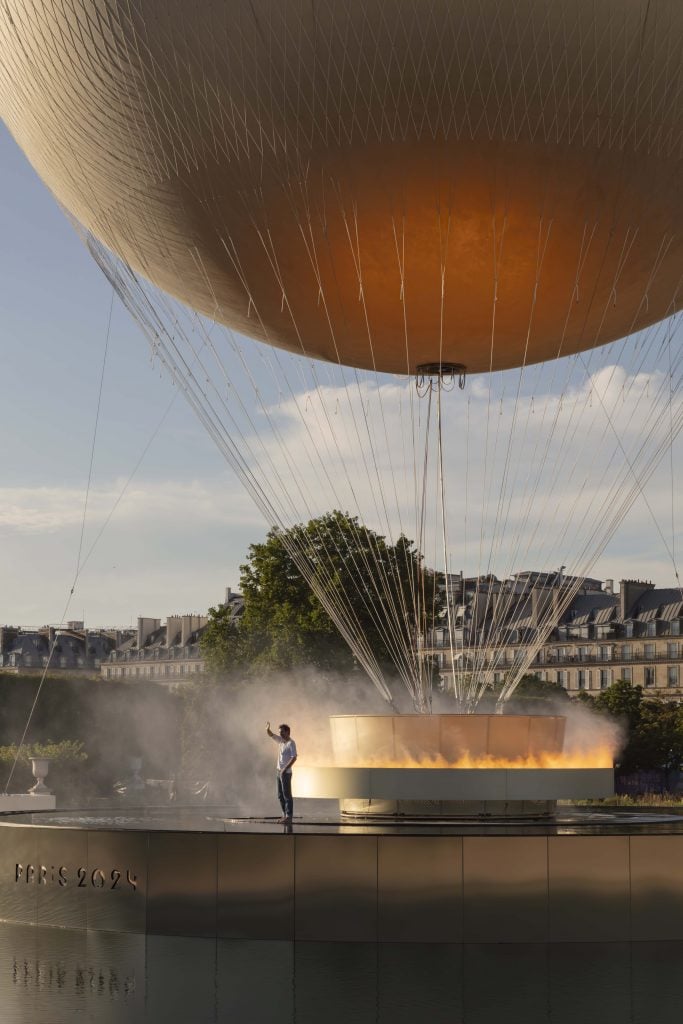
Mathieu Lehanneur with his Paris 2024 Olympic Cauldron. Photo ©Felipe Ribon for raf-studio.
Unlike those previous designs, there was no way to test drive the Paris cauldron in its entirety—Lehanneur didn’t want to risk images of the sculpture in flight leaking ahead of the opening ceremonies. But he is confident that the mechanics behind the work are equipped for a longterm display.
The cauldron isn’t the only part of the Paris games that could stick around. Mayor Anne Hidalgo told Le Monde that she loves the Olympic rings that currently adorn the Eiffel Tower—itself an unintended holdover from the 1889 World’s Fair. She also wants to find a place for the set of 10 monumental sculptures of influential women from French history erected on the Seine during the opening ceremony and intended as a gift to city.
But much of what makes Lehanneur’s cauldron so spectacular is its illuminating flames—a light that tradition demands be extinguished as each games draws to a close.
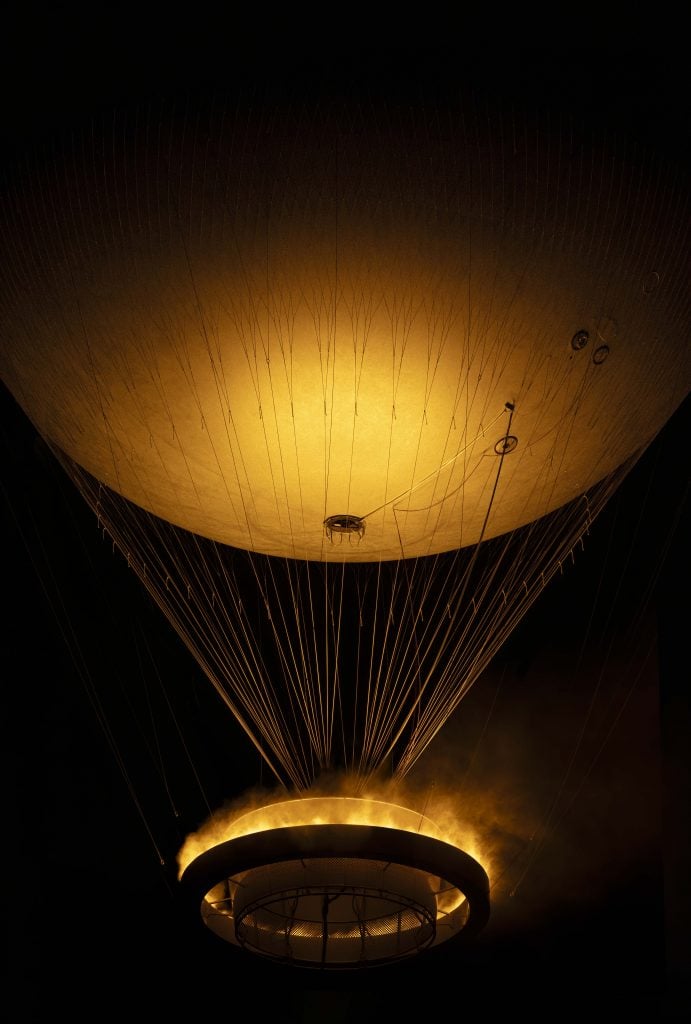
Mathieu Lehanneur, Paris 2024 Olympic Cauldron. Photo ©Felipe Ribon for raf-studio.
“Of course, we cannot say to Los Angeles [host of the 2028 games], we cannot say to the IOC, we in France need to keep the flame,” Lehanneur said.
But his environmentally minded design just might offer the perfect loophole. Despite appearances, the 20-foot-wide, 90-foot-tall Olympic cauldron does not actually contain a flame. The warm, golden glow comes from LED lights, and what appears to be smoke is just a gentle mist, illuminated to give the appearance of fire. (It’s also not actually a hot air balloon, but a helium balloon.)
Keeping an actual flame lit high up in the air would have presented a huge technical challenge. A gas flame also would have been a huge waste of energy for a games that is trying to limit carbon emissions to 1.5 tons.
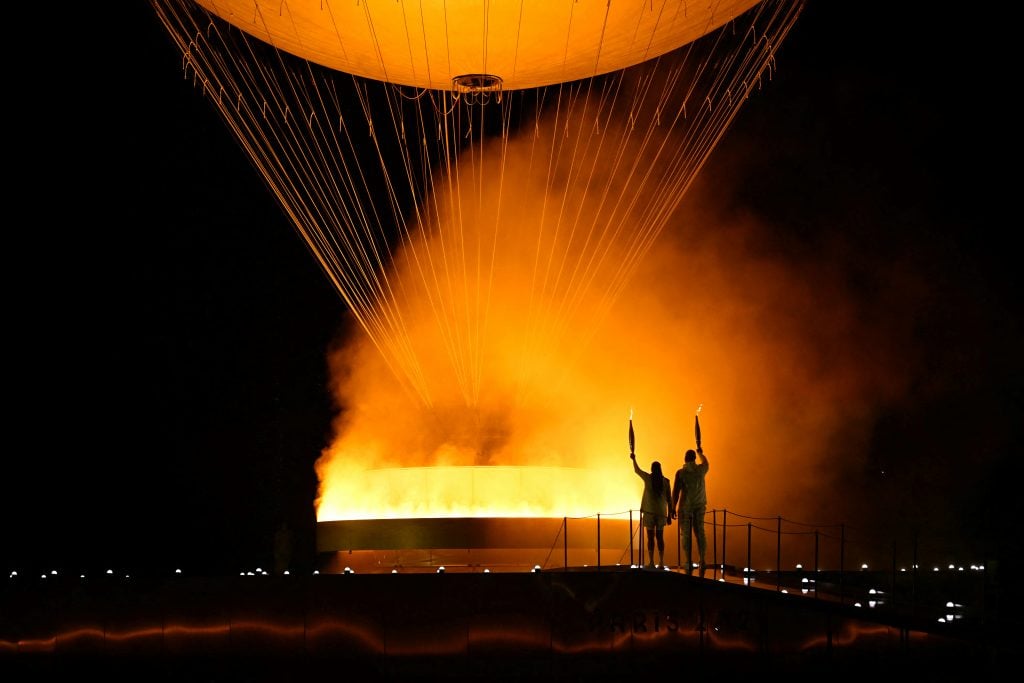
The torchbearers French former sprinter Marie-Jose Perec and French judoka Teddy Riner lighting Mathieu Lehanneur’s Olympic cauldron during the opening ceremony of the Paris 2024 Olympic Games in Paris on July 26, 2024. Photo by Mohd Rasfan/AFP via Getty Images.
“One of the main challenges was to bring electricity and high pressure water to 60 meters [200 feet] high, in order to be able to get these tiny drops of water that will be dancing over the light to create this new generation flame,” Lehanneur said. “Another big challenge was to convince the IOC and its president, Thomas Bach, to accept and to validate this flame.”
Ahead of each Olympics, the sun’s rays light the torch atop Mount Olympus, and the flame then travels from Greece to the games. But in Paris, the actual flame isn’t up in the cauldron, but burning nearby in the garden in a small, unassuming white box.
The high-tech cauldron is an improvement on the Tokyo flame, which was the first to burn hydrogen (carbon dioxide-free), rather than the typical propane fuel.
“Our flame is zero carbon,” Lehanneur said, “because it is made out of light and water.”





